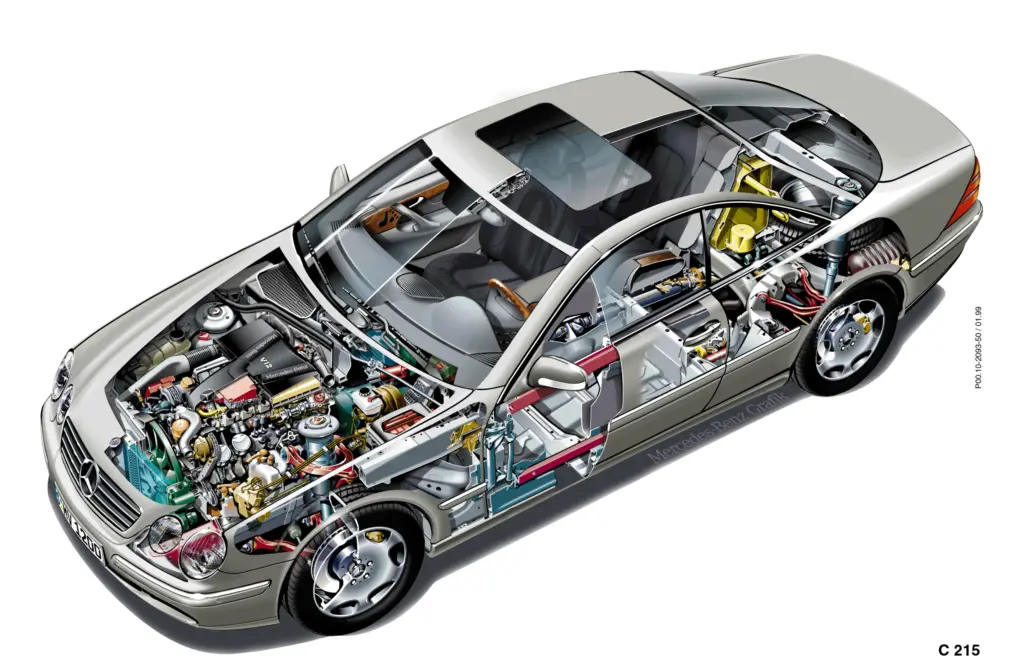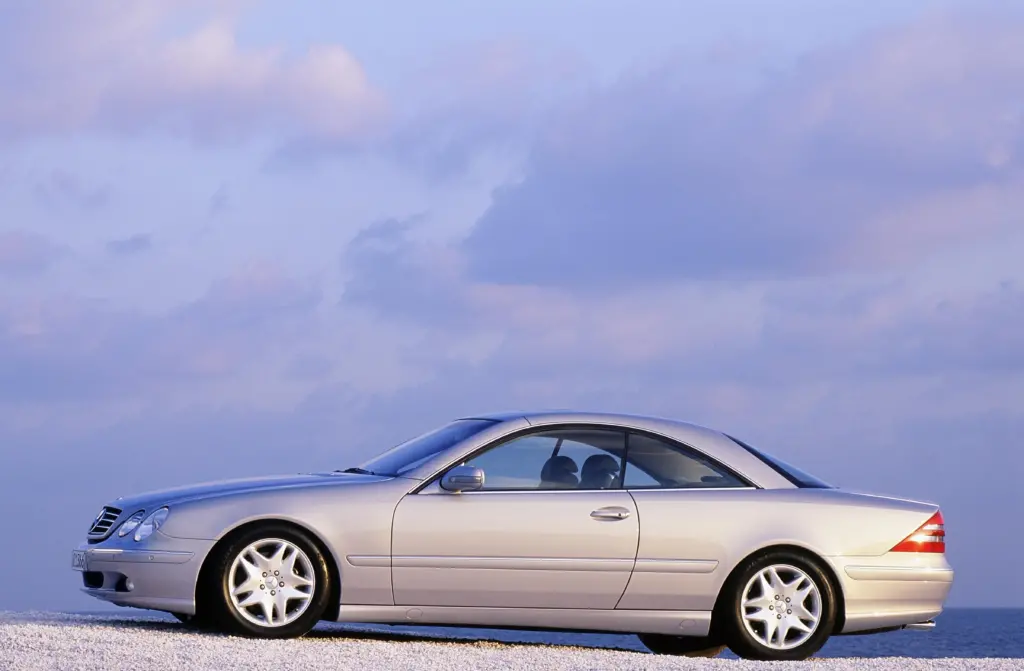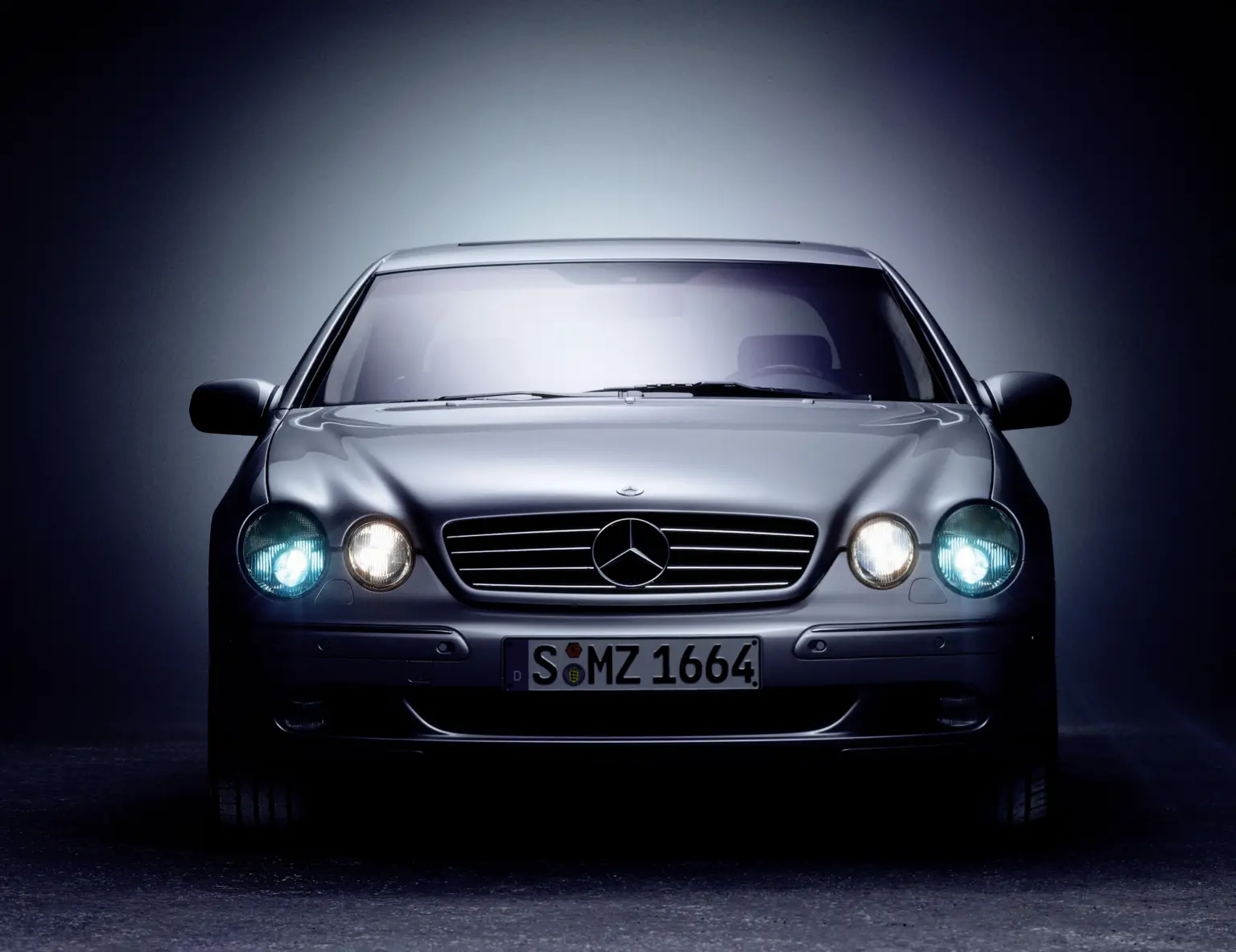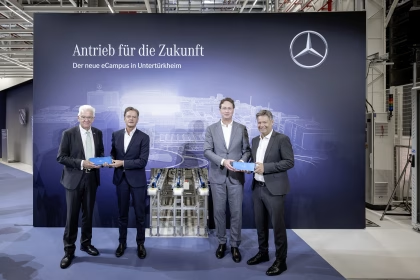- Bruno Sacco was responsible for the design of the luxury coupé in the C 215 model series
- Premiere of the active suspension system Active Body Control
- Powerful V8 and V12 engines
- Lightweight construction and numerous technical innovations
The new large Mercedes-Benz CL coupé from the C 215 model series effortlessly won general acclaim 25 years ago. The public had already responded enthusiastically during the premiere at the Geneva Motor Show in March 1999. The press driving presentation in the south of France in the autumn reinforced this impression. As a world first, the coupé offered the active suspension system Active Body Control (ABC), a Mercedes-Benz development for maximum dynamism and comfort. Mercedes-Benz Head of Design Bruno Sacco and his team were responsible for the design. The C 215 model series was one of the last of the brand to bear the signature of this seminal stylist.
Pioneering suspension with Active Body Control
“Active Body Control was perhaps the vehicle’s greatest innovation”, says Frank Knothe, looking back. The engineer and model series manager for the Mercedes-Benz S-Class, SL and SLK carried out the overall technical configuration with his team. “With ABC, the CL is not just a luxurious coupé, but also displays sporting genes and comes very close to exclusive GT vehicles in terms of its overall characteristics”.

With 200 bar high-pressure hydraulics and powerful sensors and controls, ABC minimises rolling, pitching, and squatting movements of the body, thereby enhancing the driver’s fitness. The company’s research department developed the system in the 1990s. In view of its great effectiveness, it was transferred directly to the C 215 production model. “With Active Body Control, we opened a new chapter in comfort combined with active handling characteristics. Development to production maturity was a great challenge owing to the short timeframe. But the result was worth it”, says Knothe.
Exquisite design meets lightweight construction
The design of the CL was also impressive. It surveyed the world with four headlamps, while its elongated silhouette and curved roofline emphasised the coupé’s dynamism. The result was quite a feat by the designers: the body of the C 215 was 72 millimetres shorter, 55 millimetres narrower and 54 millimetres lower than its predecessor, the C 140, and the wheelbase was 60 millimetres shorter. Nonetheless, with interior dimensions at S-Class level, the CL met the highest expectations in terms of spatial comfort. The lightweight construction concept with high-strength steel, aluminium, magnesium and plastic reduced the vehicle weight by 340 kilograms compared to the C 140.
Its position at the top of the Mercedes-Benz model range was reflected in the appointments of the CL, which was assembled on a separate line at the Sindelfingen plant. The dashboard, seats, door and side panels, as well as the armrest on the centre console, were lined with leather as standard. The interior highlights included generous use of wood trim. From spring 2001, designo stone trim became available for the interior of the CL.
Top-of-the-range AMG model with V12 bi-turbo engine
The CL 500 with a V8 engine and 225 kW (306 hp) power was launched in October 1999. The 270 kW (367 hp) CL 600 with a newly developed V12 engine with automatic cylinder deactivation followed in 2000. Fuel consumption was reduced by around 20 percent compared to the preceding model in the C 140 model series. Cylinder deactivation was also optionally available for the CL 500.

In addition to the CL 500 and CL 600, there were two AMG high-performance versions in the C 215 model series: the V8 CL 55 AMG (265 kW/360 hp) was presented in late autumn 1999, followed by the twelve-cylinder CL 63 AMG (324 kW/444 hp) in 2001. The top model arriving in 2003 was the CL 65 AMG with a V12 bi-turbo engine, 450 kW (612 hp) and 1,000 Newton-metres of torque. At the time, the high-performance coupé was one of the two most powerful cars in the history of AMG and Mercedes-AMG – alongside the S 65 AMG Saloon presented at the same time.
Innovations in the sporty and luxurious model series
Active Body Control was not the vehicle’s only technological innovation. In addition, the luxury-class coupé was equipped with the Electronic Stability Program ESP®, anti-slip regulation ASR, the anti-lock braking system ABS and the braking assistance system BAS as standard. It also had features such as innovative bi-xenon headlamps with a cleaning system for high and low beam, as well as the PARKTRONIC system. Numerous airbags protected the occupants, while integral seats for the driver and front passenger with an easy-entry function contributed to comfort.
A new door hinge with four joints ensured easy entry and exit. “It looks inconspicuous, but a great deal of engineering work went into the hinge. It was a very sophisticated solution, as the aim was to achieve consistently small gaps in the door aperture”, recalls Frank Knothe. An electronic tyre pressure monitoring system, DISTRONIC adaptive cruise control and other solutions such as the chip-card based Keyless Go drive authorisation system were available on request.
By February 2006, 47,984 CL models of the C 215 series had been built – a successful chapter in the history of luxurious sportiness at Mercedes-Benz. The best-selling model was the CL 500 with 32,224 units, accounting for more than two thirds of total production.
The C 215 also made a name for itself on international race tracks. In the 2000 Formula 1 season, a modified Mercedes-Benz CL 55 AMG entered service as the Official F1™ Safety Car. From autumn 2000, Mercedes-Benz offered the CL 55 AMG “F1 Limited Edition” in Safety Car style for customers with decidedly sporty inclinations. The Coupé was limited to 55 units and had highly exclusive appointments. It was the world’s first road-legal vehicle to feature a braking system with internally ventilated brake discs made from fibre-reinforced ceramics.















